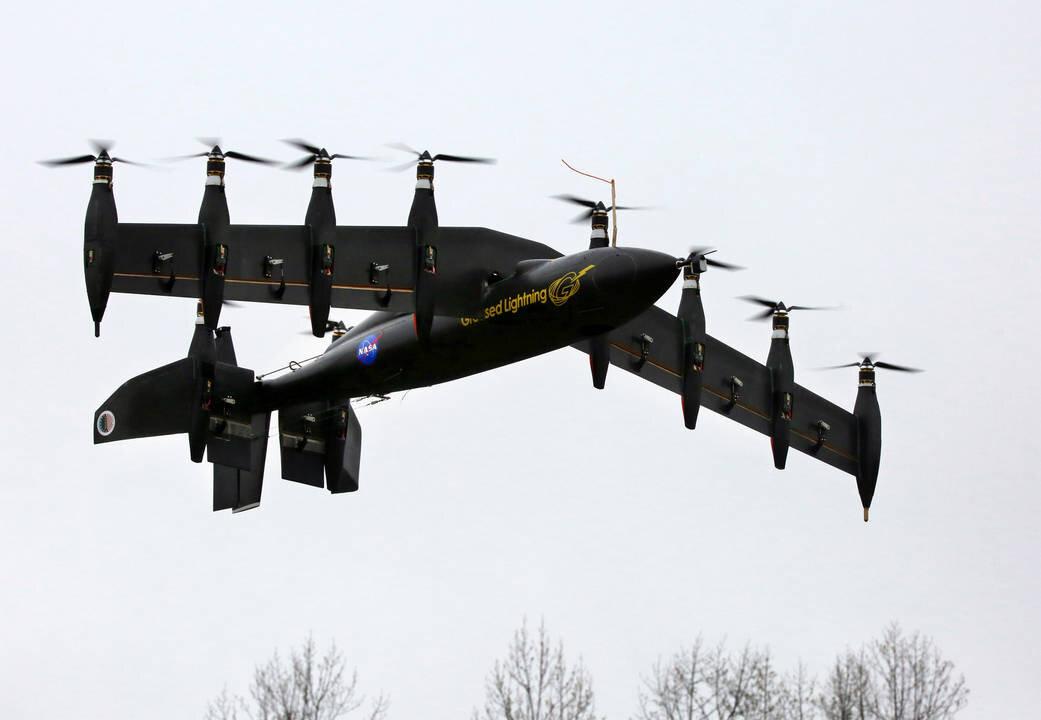A new era of flying may be upon us: A battery-powered electric plane with 10 engines developed by NASA has successfully completed flight tests.
The plane, whimsically called Greased Lightning or GL-10, takes off like a helicopter but flies like a plane.
But we can’t get too excited yet. The current model is remote controlled and has only a 10-foot wingspan, meaning the current iteration isn’t exactly designed for paying passengers.
The team at NASA’s Langley Research Center in Hampton, Virginia, is developing GL-10 as an unmanned aerial vehicle (UAV)—a next generation drone, if you will.

Engineers David North (L) and Bill Fredericks carry Greased Lightning before one of its flight tests. NASA Langley/David C. Bowman





